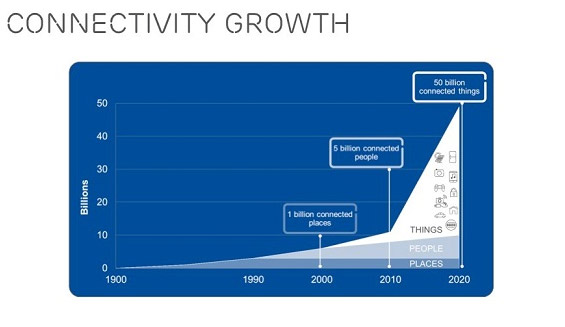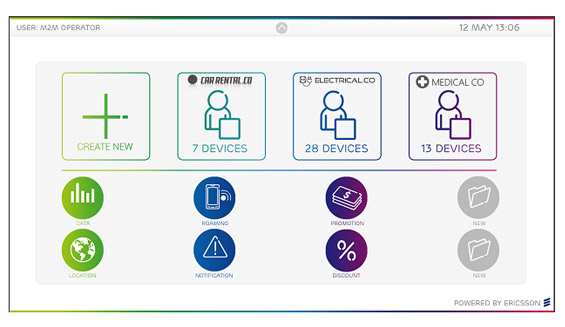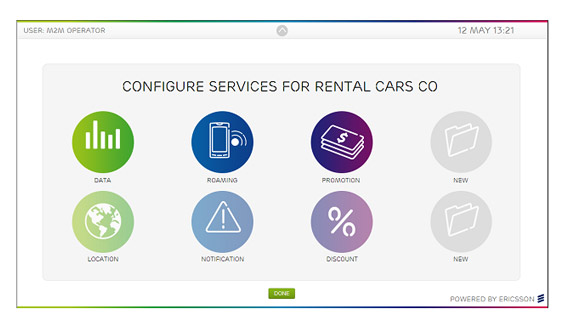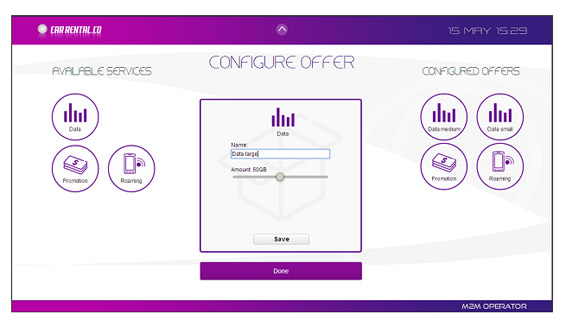Machine-to-machine (M2M) communication is expanding fast. Declining costs, improved coverage, more capable radio technologies, regulatory mandates and a growing range of successful applications and business models are all key drivers. And operators now have the opportunity to apply their operations and business support system experience.
As industry supply chains digitise and incorporate M2M technologies, operators have a unique opportunity to apply operations and business support system experience and innovations to those vertical markets. After all, says Peter Briscoe, executive director of Innovation, Business Unit Support Solutions at Ericsson, operators have successfully managed large, highly complex digital networks and operations for decades.
A growing market
Connectivity has grown rapidly over the last several years. Places were connected first. Then people. Now, devices. In the Networked Society, device miniaturisation, digital technologies and IP networks make it feasible and cost-effective to connecteverything that can benefit from being connected.

Although many devices are still connected via landline, M2M connectivity using cellular networks is growing rapidly. The 2014 Ericsson Mobility Report estimates that there were more than 200 million cellular M2M devices in active use at the end of 2013, with forecasts of 600-800 million devices by 2019. This ongoing growth stems from new device types being deployed in a variety of industries, as well as organic growth in blossoming M2M verticals such as transportation, utilities and healthcare.
The OECD’s International Transport Forum has forecast that the number of cars worldwide could reach 2.5 billion by 2050, which will accelerate M2M adoption as automotive M2M becomes commonplace. Transport M2M has already moved beyond simple connectivity to the management of transport networks in the cloud.
The utilities industry is undergoing a massive digital transformation as it introduces powerful, innovative technologies, such as smart grids. By the year 2020, billions of intelligent devices will be connected to the energy smart grid — from street lamps and home appliances to electric vehicles, solar panels and wind turbines.
Another vertical market that is rapidly adopting M2M cellular technologies is healthcare. In early telemedicine applications, the vital signs of a patient living in a remote area could be monitored. Or the patient could be reminded remotely to take or refill their medication. Mobile digital health today is focused on enabling ecosystems of physicians, payers and providers that provide real-time consultation and patient feedback by sharing collected data and analytics over broadband networks.
Yet, even with all of this demand, the total number of embedded M2M modules is a fraction of the full potential. So how will operators drive further growth?
M2M service evolution
Because M2M complexity can be a major barrier to faster adoption, operators are excellently positioned to deliver value and simplify the complexity.
The first generation of M2M services was focused on simple remote device connectivity. For instance, to support status monitoring of things like automobile engines.
In the next stage of M2M services, operators can enable two-way connectivity to control the device remotely based on its monitored status, thereby eliminating expensive utility truck-rolls. The future set of M2M services will enable more complex sharing of data taken directly from devices across traditional vertical markets.
Just like operators, enterprises that provide M2M services and applications need to quickly deploy innovative and personalised services to remain competitive. Enterprises need to speed new services to market, and make connectivity and control changes in response to customer needs without needing to contact their operator.
Agile operators that provide enterprise customers with this level of M2M device data control alongside high bandwidth, flexible service creation and control will enhance customer experiences, thereby driving higher revenues and margins.
Bumps on the road to M2M service agility
In the typical M2M architecture, collected data are transmitted to the dedicated hub of a specific service for processing and management. However, as M2M adoption expands to multiple verticals and each vertical increases its level of M2M maturity and service complexity, having a plethora of siloed systems impedes service agility. Service delivery is slowed, innovation stifled, and cross-vertical services, such as providing healthcare services to a car, impractical.
Just as the advent of IP-enabled, unified, end-to-end management across previously siloed network domains, the M2M market will benefit from taking an integrated approach that gathers data from a wide variety of devices in multiple verticals and provides a unified service enablement infrastructure that is based on reusable service building blocks.
Using an integrated platform approach puts operators in a unique position to deliver more innovative services, higher levels of service quality and improved customer experience than over-the-top, dedicated M2M platforms can. This unified approach enables a host of new services that can incorporate data from multiple verticals. In addition, network insights can be gained and actions taken in the context of specific device information, such as determining when and why a device should provide data or how it should be controlled.
The infrastructure should be designed to enable flexible service creation and delivery and, more importantly, enable enterprise customers to manage directly both connectivity and value-added services.
The result is increased operator revenue opportunities in the M2M vertical markets and lower costs through consolidation of silos and reduction in the number of systems and unique user interfaces.
M2M offer handling
For simple connectivity, the M2M supply chain includes the mobile network and an M2M connectivity services platform that manages device connectivity, such as SIM card activations. But to efficiently deliver and manage innovative digital services beyond connectivity, an M2M offer-handling capability is needed.
Such an offer handling platform gives operators the capability to create and manage services and subscriptions, manage connectivity through the device lifecycle, enable enterprise customers to self-manage services and automate business processes between the operator and enterprise subscribers. Operators can then cost-effectively develop new revenue streams and support a variety of M2M devices as they come to market, while simplifying service delivery and management processes.
A platform approach doesn’t just provide a portal to efficiently manage M2M services for a large number of devices. It also centralises M2M offer handling across a wide range of industry verticals onto one platform with a single set of user interfaces and a unified product and services catalog, thereby streamlining service creation and management.
Having the operator and the enterprise use the same platform increases flexibility and reduces service delivery and testing time.
The operator perspective
With an integrated platform, the operator can use a single control panel to create profiles for a variety of M2M verticals, such as car rental, electrical and medical companies, and extend them as desired.

They can then edit the services to be made available to the enterprise customer, such as access controls and reusable components the enterprise can use to define their own services.

The enterprise perspective
Accessing the same platform and using the same approach, the enterprise can create new offers and also instances of those offers on demand. Below is an example of a white-branded rental car company portal.

The enterprise can use the portal to create instances of their own services, such as assigning services to a specific car over a given time period, without contacting the M2M operator. The service information would be sent to the rental car company’s main booking system via an API.
Summary
Operators have a significant opportunity to deliver valuable services to vertical industries using an M2M approach, especially as M2M services become more complex. This means moving away from providing just connectivity. Instead, operators should focus on more advanced data-centric M2M services and how to connect the data between vertical markets.
They can differentiate themselves from pure cloud-based M2M platform providers by expanding device-enabled network coverage and providing enterprises with offer handing functions they can use to define and control their own services.
The benefit of an integrated platform approach is an increase in agility and revenue opportunities in the fast-growing M2M marketplace as well as reduction in manual effort and management system complexity.
The author of this article is Peter Briscoe, executive director of Innovation, Business Unit Support Solutions at Ericsson
Got a comment? Find us on Twitter @vanillaplusmag @jcvplus










